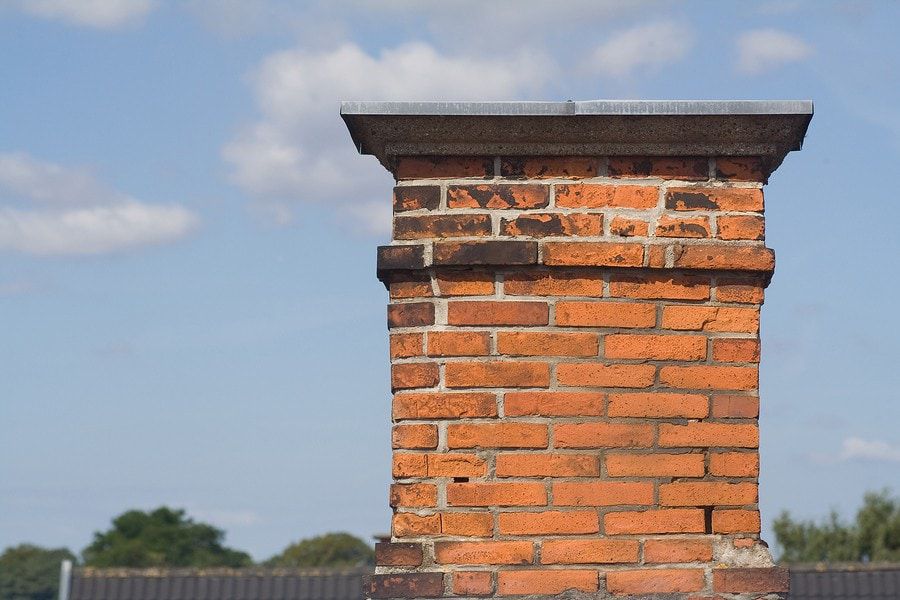Brick and mortar, this is for the folks with masonry chimneys or masonry at all. Pointing, Repointing, and Tuckpointing is a trinity of points essential to know when calling about something wrong with the bricks, specifically with the mortar.
Today we will be going over what exactly these three terms are, how they relate, and which exactly is important. In common speech, one may use the term “pointing” for all three, so if a homeowner wants specifics, it’s your job to know terms.
Pointing
Pointing is not too hard to understand; it’s the laying of mortar to hold bricks together. More specifically, it is the filling of defects likely in the brick shape and the finishing of mortar joints; one may think of it as being placed atop the joint. There is the initial mortar work done, then afterward pointing to fill in any mistakes. Pointing may involve raking, the taking out of some of the mortar, to replace with another stronger or otherwise better mix. What are mortar joints?
To most people, the mortar joints are best described as the mortar itself; it’s just the mortar lines holding bricks together. Yet, it’s not exactly that simple; they have shapes, variants in importance, and purposes. All that we will go over in another blog, so see you there!
As for what is essential to understand about joints in masonry? The mortar used in pointing is vital. Incorrectly done pointing can lead to irreparable damage to a wall; what is the cause of this damage—water, the arch-nemesis of engineering and architecture, and even the fine arts. Bricks and stones are excellent materials, porous and surprisingly absorbent; they need to be allowed to breathe and drain, yet the mortar also needs to be absorbent while itself able to drain as in pointing its job is to protect the joints from water. It must be flexible and not too strong; the mortar’s job is to take the damage instead of the bricks themselves.
Along with all that, pointing also has to look good, otherwise why not just plaster walls instead. Providing complete protection from water and the elements, plaster gives the appearance of a plain flat wall. When one gets pointing done, they likely want the wall to have that Brickhouse aesthetic.
Repointing
With that in mind, it turns out mortar has a relatively short lifespan, at least when compared to the bricks, blocks, or stones used to hold together. This is entirely the point, as they are the lungs to prevent bricks from deteriorating, and pointing is easy to address and repair compared to brick damage. Thankfully there is a name for this process, repointing.
Repointing has to be done every few years to maintain walls of masonry. The process is precisely what it sounds like, pointing… again. When correctly performed, it restores both the visage and structural integrity, leading to the longevity of the building or, in our case, the chimney and the building envelope. It’s also not too expensive.
A building envelope is the divide between the conditioned and unconditioned environments of a building. In a sense, “building envelope” refers to the inside and outside; however, the terms are not to be interchanged. The conditioned environment specifically refers to air current, temperature, and in some cases, may refer to serialized air. The inside included the attic, basement, and garage in many homes, but the envelope does not tend to include such spaces.
Tuck pointing + more
Tuck pointing is a specific variant; it’s a purely aesthetic difference, though it does the functions pointing should. Other variants include the disastrous strap pointing, utilitarian flush pointing, typical grooved pointing, etc.
Tuckpointing is explicitly done to look good, using a masonry with a color similar to the bricks or stones and then racking out a grove in the center of the joint to fill with white lime putty, giving the wall more brick and minor mortar appearance with thin and straight lines.
Flush pointing leaves the masonry looking somewhat unappealing. Excess mortar is removed from the joint, leaving a flushed joint. While sacrificing looks, the boon in exchange is excellent durability, as it does not have space to collect water or debris.
Strap pointing is terrible; with straight lines and no style, it often uses cement and locks in moisture, failing its one job. This pointing likely will only damage the wall over time and will need to be removed. Meanwhile, the average is grooved pointing which looks refined and works just as well. It may also be called keyed pointing; it’s named like this because it has a groove in the pointing keyed/rubbed in.


Recent Comments